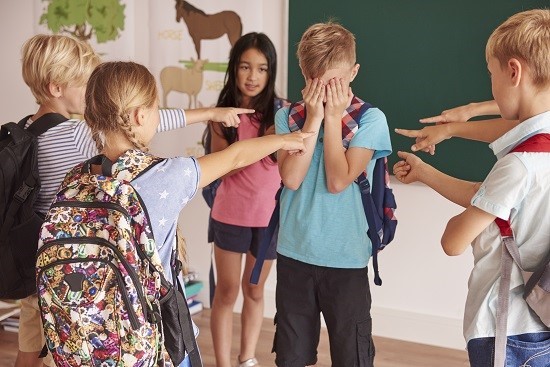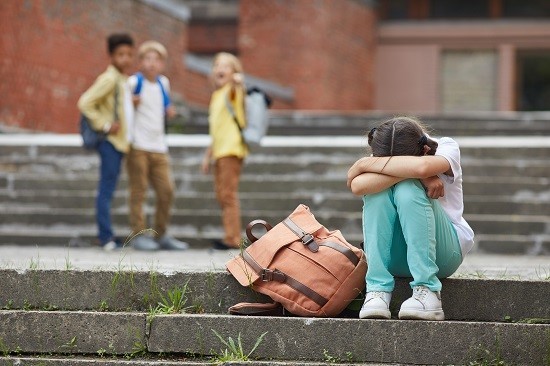They say that a person can be judged by the company he keeps.
This is largely due to homophily, which is the individuals’ tendency to
affiliate with like-minded people. When part of a group, the influence placed
on members of the group can be powerful. This influence is commonly referred to
as peer pressure, Becoming more aware of what peer pressure is may help avoid
some of its negative effects and help make wiser decision when it comes to who
you associate yourself with.
اضافة اعلان
What is peer pressure
Peer pressure is the influence people have on one another to
conform within the same social group in order to be accepted. Typically, the
people that are considered peers to an individual are those who share similar
social status, abilities, or are within the same age group. As such, these
peers are often thought of as friends, but they may also be classmates,
coworkers, teammates, etc.
Although peer pressure can affect those of any age,
teens and adolescents tend to be the most susceptible. The exact reason for this is not
fully understood, but there have been two reasonable explanations set forth
that are relatively intertwined.
One has largely to do with school and
social settings. As
students begin to sort themselves out into groups, pressure forms to adopt and
form into a cohesive group that shares styles, values, and interests. This
process is called normative regulation and the ultimate goal is to form a group
that is united and distinguished from other groups.
The other explanation focuses more on the individual. In
short, teens and adolescents tend to attempt to become more emotionally
independent from their parents too quickly. As a result, they look to peers in
order to fill the void, but in order to do so, they may need to alter their
behavior to fit in.
There are two sets of data that may support these
explanations. One is that there is early work being done that has potentially
found that the brain system responsible for processing social information
undergoes remodeling around the time of puberty. Consequentially, this could
lead to an increase in adolescents and teens becoming more aware of and
attentive to the opinions of their peers.
 (Photo: Envato Elements)
(Photo: Envato Elements)
Similarly, one experiment attempted to assess the
risk-seeking behavior peers can have on an individual. For teens and adolescents,
they were twice as likely to engage in risky behavior when exposed to their
peers than when they were alone. This test was also performed on young adults,
which only saw a 50 percent increase in risky behavior, as well as on adults,
on which there was no impact at all.
Types and signs of peer pressure
Although it is generally perceived as a negative influence,
peer pressure may also be positive. Some research even showed the positive
influence peers can have on an individual in terms of
social behavior. When
peers endorse positive and altruistic behavior, individuals are also more
likely to engage in these behaviors in their private life. On the other hand,
negative peer pressure is when peers endorse dangerous or damaging behavior.
Peer pressure is more subtle than it is overt, and signs of
peer pressure may be more difficult to spot. Many signs overlap with those of
bullying or mental health concerns, such as depression, and if noticed, a
supportive conversation should be had in order to investigate the cause. Some
signs may include avoiding school or other social settings, becoming image
conscious, changes in behavior, expressing or feeling as though one does not
fit in, making social comparisons, and difficulty sleeping.
Impact of peer pressure
It is impossible to shield yourself or loved ones from the
influence of peer pressure. Social interactions are integral part of improving
wellness and healthy development. Even the impact of peer pressure can be
positive. Peer pressure can encourage peers to gain new experience and push
themselves to achieve their goals. Similarly, peers are a source of friends
which can create a support system, boost self-esteem, and serve as role models.
Finally, peer pressure may push to
socialization, which is useful in learning
how to adopt different social norms and adapt to situations.
Unfortunately, peer pressure may also have many negative
implications. Negative peer pressure has the potential to be detrimental to
mental health by being the source of conditions such as anxiety and depression
or worsening it for those who already have mental health issues.
 (Photo: Envato Elements)
(Photo: Envato Elements)
Similarly, it can negatively affect self-esteem and
self-confidence by making one feel inadequate or socially unfit.
Risky behavior is one of the greatest concerns related to
peer pressure. Risky behavior may include activities that are illicit or
damaging to oneself or others. Additionally, the influences of peers can cause
sudden mood changes, which may result in arguments or an individual distancing
himself from friends and family.
Peer pressure in Jordan
Two common negative impacts of peer pressure are eating
disorders and substance abuse, and Jordanians are no exception. One study
focused on assessing eating disorders among Jordanian teenagers aged 14-16. The
prevalence of disordered eating behavior (DEB) was found to be 23.6 percent.
When broken down into genders, the prevalence was statistically higher in girls
(29.4 percent) than in boys (16.4 percent). The data of this study reflected a
significant relationship between peer pressure and DEB.
In terms of substance abuse, rates are relatively low among
the general population and even more so in youth. Instead, one study focused on
male perception of underage smoking in Jordan. This study involved males
between the ages of 14 and 17. It found that roughly 78 percent of underaged
respondents smoke and the reasons for smoking were suggestive of peer pressure.
The leading reasons teens in Jordan smoke were: to appear
strong or masculine (27 percent), increased self-confidence (17 percent), and
peer pressure (16 percent). Similarly, the most common places to smoke were in
public or social settings, such as around school (30 percent), around
supermarkets (29 percent), and in parks and cafés (25 percent).
How to help
For
parents that want to help their child properly navigate
peer pressure, the most important way is to support them. They need to be
involved in their lives in order be aware of signs that their children may be
struggling. The more involved you are, the easier it will be to notice changes
in behavior and attitude.
It is also important to communicate with them not just when
changes occur. Having regular dialogue provides the opportunity to check on
their mental health and wellness. When changes and signs of negative peer
pressure are noticed, it is important to approach the situation with tact.
A healthy balance between conversation and space is
paramount. Pushing too hard or interrogating will only perpetuate rebellious
behavior. That being said, if your child’s physical or mental health and
well-being is at stake, do not be afraid to intervene and take the action
necessary to ensure his safety.
Read more Health








